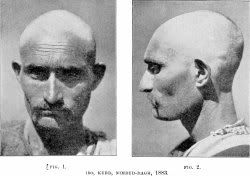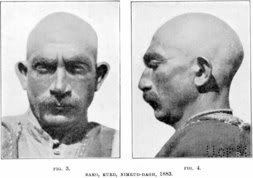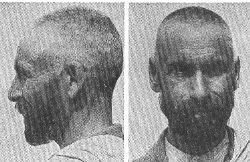
 |
Todays Date: |
The Irano-nordoid, or Irano-Afghan race occupies most of the Iranian plateau, areas of Afghanistan, Pakistan, and areas of northern Iraq and western Turkey (Kurd land). Obviously associated with the Aryan peoples of whom Iran derives its name. For the purpose of this article Irano-Afghan shall include all groups defined as Iranid, Nordindid, and those in such character. Their point of origin is the subject of much debate. Some contend that these peoples migrated from central Asia. I personally tend to the thought that the Irano-nordoid stock was indigenous to Iran. The race is categorized as part of the greater Mediterranid race according to Coon, but is differentiated by its taller stature, long-headed with deep occiput, long prominent nose, sloping forehead, bony face, greater beard and body hair growth, shorter trunk, wider upper body, and longer limbs. Most tend towards lighter or moderate pigmentation. The bone structure is much heavier than their Arab neighbors. Metrically they are very similar to the corded people who invaded Europe. These people were known as the battle axe peoples. They were a warrior race who invaded Europe in the early neolithic era. Many Nordics also retain a very similar head form, with maybe a little less exageration of features and less of a tendency towards nasal convexivity. In europe the form is less prominent and often intermixed with alpine or other local variants. But nevertheless it does appear, occasionally in northern Europe, particularly among nordic nations. It comprises the principle stock of Iran's people. Today Persians, Gilanis, Gilakis, Mazanderanis, Kurds, Lurs, most Baluchi (except those with negroid and/or Veddoid admixture), Dari, Pashto, some Azeris, and some Tajik tribes exhibit this form. In Azerbaijan this physical type may exhibit brachycephaly (rounded-headedness). To a much lesser extent such forms are present in northern India. In Iraq those who are descendants of the Mesopotamian Babylonian sometimes show a similar form. Bones from archaelogical sites show that they have been in Iran for quite a long time.



pics 1 & 2 from Felix V. Luschan, The Early Inhabitants of West Asia pic 3 from Carleton S. Coon, The Races of Europe |
©Parsa. All rights reserved. Contact Parsa admin at parsa_w@yahoo.com